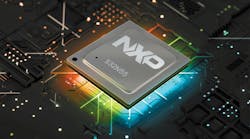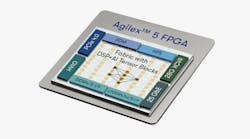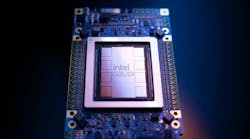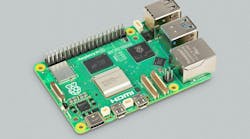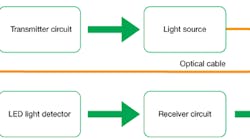The emergence of IoT in cloud computing and the demand for 4G and 5G networks worldwide are driving increased usage of optical transceivers in a wide variety of applications: business, government, industrial, academic, and cloud servers in public and private networks. Both local-area networks (LANs) and wide-area networks (WANs) are demanding more bandwidth packed into smaller spaces, and traditional copper interconnects can’t satisfy the insatiable appetite of all the network servers and gateway devices.
Furthermore, the next generation of networking devices will need to be even more compact and faster. According to market research firm Radiant Insight, the optical transceiver market will reach $9.9 billion by 2020, three times its 2013 level.
Optical transceivers are the key components that transform electrical signals to light over optical cables. At the receiving end, another optical transceiver will convert the light back to electrical signals (Fig. 1). Most transceivers operate with speeds of 10, 40, and 100 Gb/s. When higher speed is needed, multiple lanes are used in parallel to deliver the required bandwidth.
1. This is a demonstration of conversion of digital data and fiber-optic light signals.


